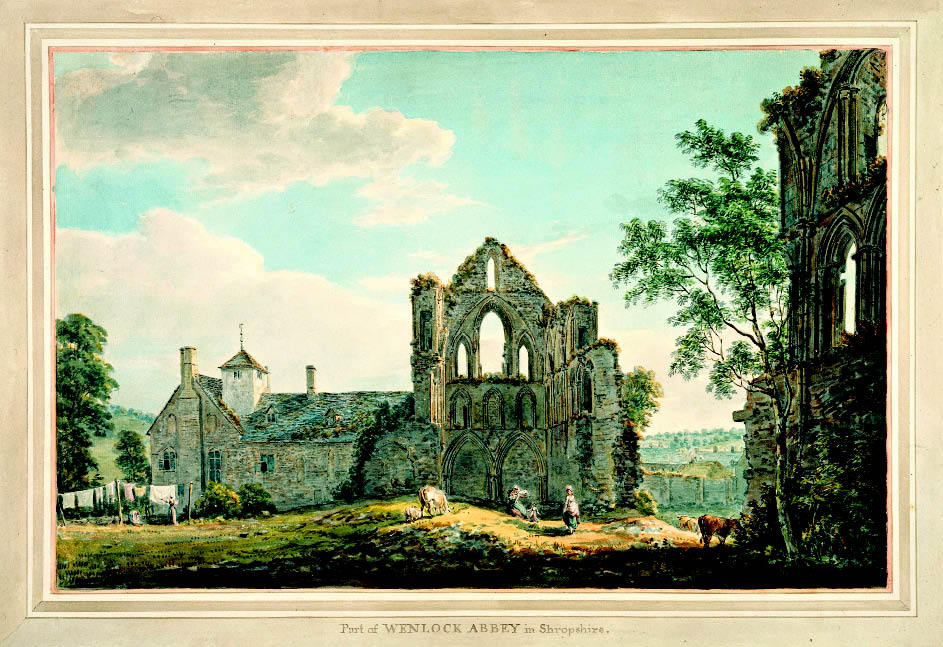Paul Sandby: Picturing Britain, a Bicentenary Exhibition
Royal Academy, until 13 June
As Paul Sandby’s dates 1731—1809 suggest, last year was his bicentenary, when this exhibition started out in Nottingham. Sandby lived in that illustrious city before heading north to Edinburgh, when he was appointed draughtsman to the Military Survey of North Britain in 1747. It is therefore most appropriate that this exhibition travelled from Nottingham to Edinburgh before coming south to the RA. It follows Sandby’s own trajectory in this. He moved to London in 1751, to stay with his elder brother Thomas at Windsor and in Soho, and became involved in the St Martin’s Lane Academy. He began to make prints, first of all satirising Hogarth’s ‘Analysis of Beauty’ and then producing a series of London Cries. His connection with Windsor was confirmed when his brother was appointed Deputy Ranger of Windsor Great Park in 1765, responsible for major landscaping schemes. Both Sandby brothers became founding members of the Royal Academy of Arts in 1768, Paul as a member of Council and Thomas as Professor of Architecture.
It is thus highly appropriate that Paul Sandby should be shown now in the Sackler Galleries of the RA, and that Thomas should get in on the act. But his presence can be confusing. It seems that Thomas frequently collaborated with Paul on pictures, besides being an immensely talented draughtsman in his own right. Both brothers were trained in topographical drawing and cartography, and brought to their work a remarkable accuracy of detail matched by a genuine sympathy for nature.
This exhibition offers another instance of the advantage of viewing a display in reverse. The last room contains by far the most interesting and original work and, when I visited, it was the least crowded. As usual, people were lingering in Room 1, in the introduction to the show, while their enthusiasm was as yet undimmed, their ardour bright. Inevitably, following the chronological course, by the time they reach the last room, their energies flag, their attention is less easy to focus, they’re looking forward to departing. These are not ideal circumstances in which to view the best work of the show. Of course, there are good things in the first room, besides the slightly insipid portrait of Sandby by Francis Cotes. There’s a large and rather beautiful map in a central cabinet, and a couple of fine watercolours — ‘Nithsdale, with Drumlanrig’ (c.1751) and a lucid panorama of Edinburgh. Also a lovely little pen-and-ink study with watercolour of a surveying party near Kinloch Rannoch.
Room 2 concentrates on Sandby’s street life drawings and prints, but I find it difficult to be excited by Sandby the printmaker. The Street Cries have charm and exact observation despite a certain obviousness, and there is evidence everywhere of great skill but not a great deal of feeling. Room 3 takes us back to watercolours, and in particular to the great Thames panoramas done from the gardens of Somerset House. These, collaborative works with brother Thomas, are remarkable, not least for the architectural detail that was Thomas’ speciality. Another large collaborative work here is the impressive ‘Camp on Warley Common’ (1778). Room 4 contains some very fine drawings — I particularly enjoyed Thomas Sandby’s ‘Nottingham Market Square from the East’, and a lovely monochrome of that city’s castle by Paul, together with two exquisite watercolours of a lady. In this room there is also a marvellous collection of Windsor Castle watercolours.
In Room 5, among other topographical treats, there is a study by Thomas of the grotto at Virginia Water, full of incredibly fine and precise detail. But save your energies for the last room, which includes three big oils that are not particularly interesting and may be set aside in favour of the large watercolours of trees. These are really superb. I have fond memories of ‘The Rainbow’ from my own student days when I studied art history at the University and it hung prominently at Nottingham Castle. Done in gouache, or bodycolour, this darkly dramatic image of mature woodland with livestock and villagers nods to Rubens but also looks forward to the new observational naturalism of the period. Three views of Luton Park in Bedfordshire are especially beguiling, being quite exceptional depictions of magnificent beech trees, present in every leaf and trick of the light. This is where the visitor should linger, glorying in a celebration of arboreal peace and beauty.
The exhibition, which comprises some 80 works, is accompanied by a comprehensive 248-page catalogue (£19.95 in softback but currently being discounted in the RA shop), edited by John Bonehill and Stephen Daniels. For those with an insatiable thirst for pictures there’s a related exhibition in the Tennant Room of 18th-century watercolours from the Academy’s permanent collection. This free display includes Sandby, with examples of work by such of his successors as Turner and Michael ‘Angelo’ Rooker.
Paul Sandby was the only founder member of the RA to be a watercolourist, and his example undoubtedly gave the medium a status it had hitherto not possessed. He is often called the father of English watercolour, and pioneered direct drawing in watercolour rather than the tinting of pencil studies. Certainly he was a considerable influence on Girtin and Turner, while his portraits of trees seem to anticipate Constable. Yet he went out of fashion in the 19th century and has never quite made it back into the front rank. This exhibition is intended to redress the balance, but for all its interest, it proves that Sandby was essentially a topographical artist, who never attempted the radical abstractions of Cotman or the romantic excesses of Turner. He remains a historical figure rather than a timeless one, lacking that hint of ‘modernity’ that exerts such a deep appeal to our eyes, but is important to our understanding of British painting nevertheless.
A very different view of nature may be found in an exhibition of Tim Nicholson’s paintings at Slader’s Yard in West Bay, near Bridport in Dorset (until 16 May). Nephew of Ben Nicholson, Tim was born in 1939, and practised until 1980 as an architect like his father, Kit. He lives and paints near Cranborne, much inspired by patterns and children’s books. His paintings are mostly done in acrylic or oil on paper, and are notable for their bold simplifications and bright colours. He alternates between camouflage and display, with patterns of dots or stripes that have a very particular character to them. Still-life meets landscape with plenty of animals and birds. Idiosyncratic and intriguing.






Comments